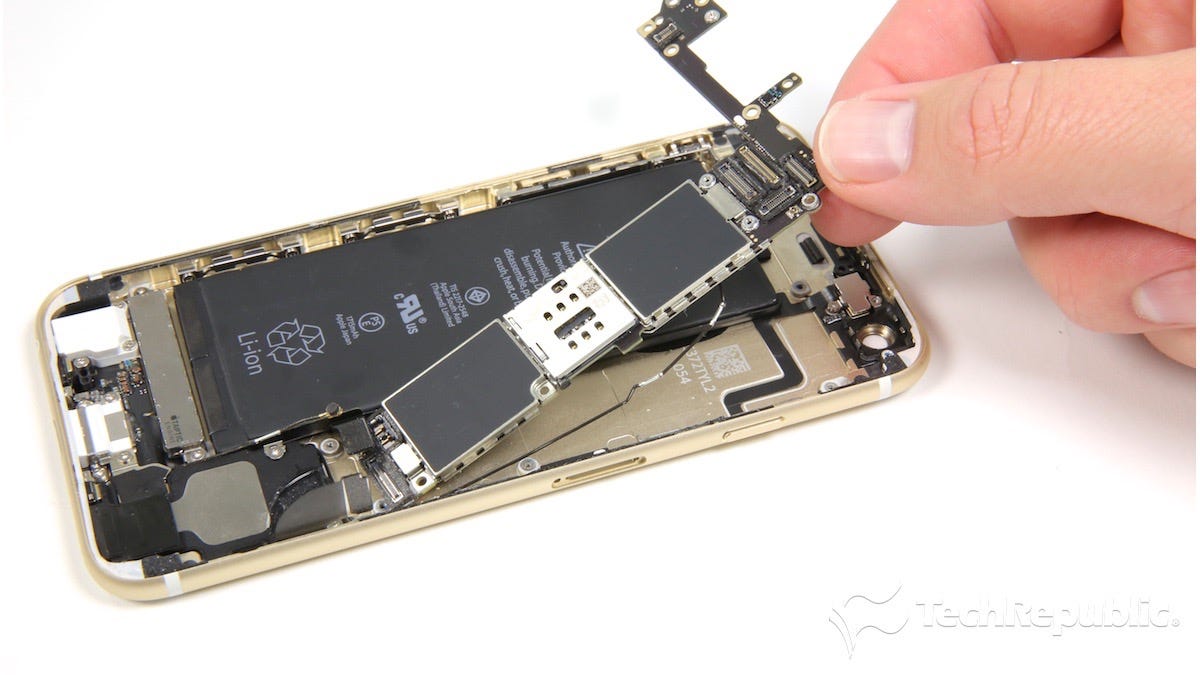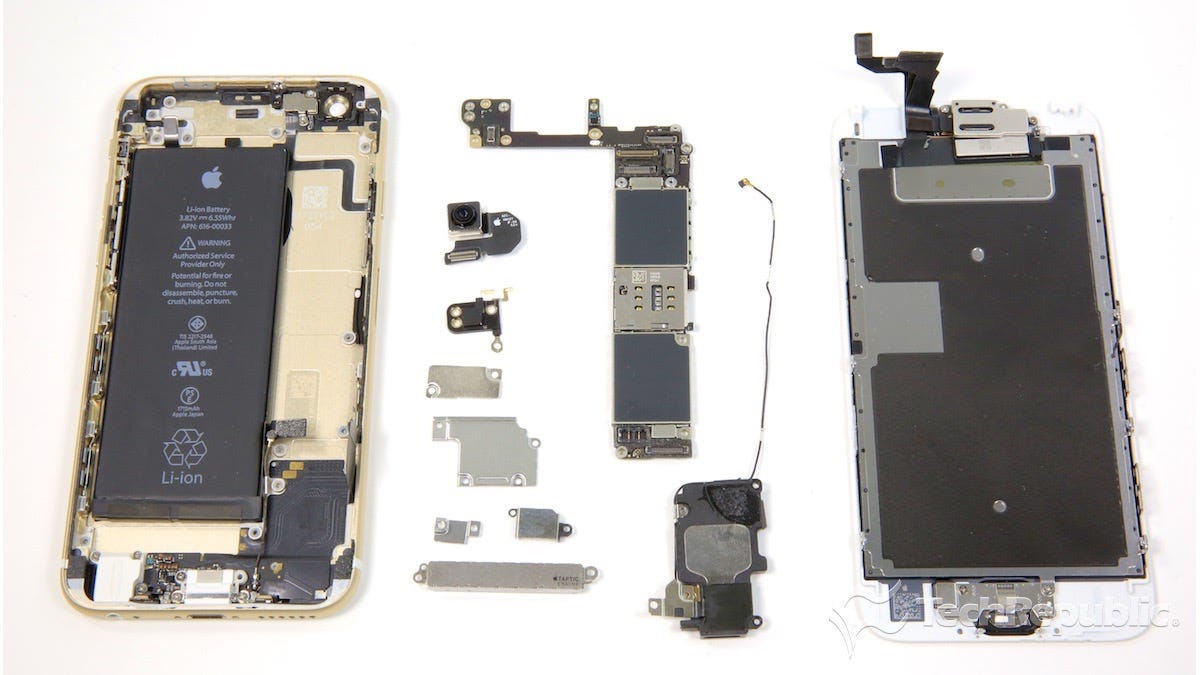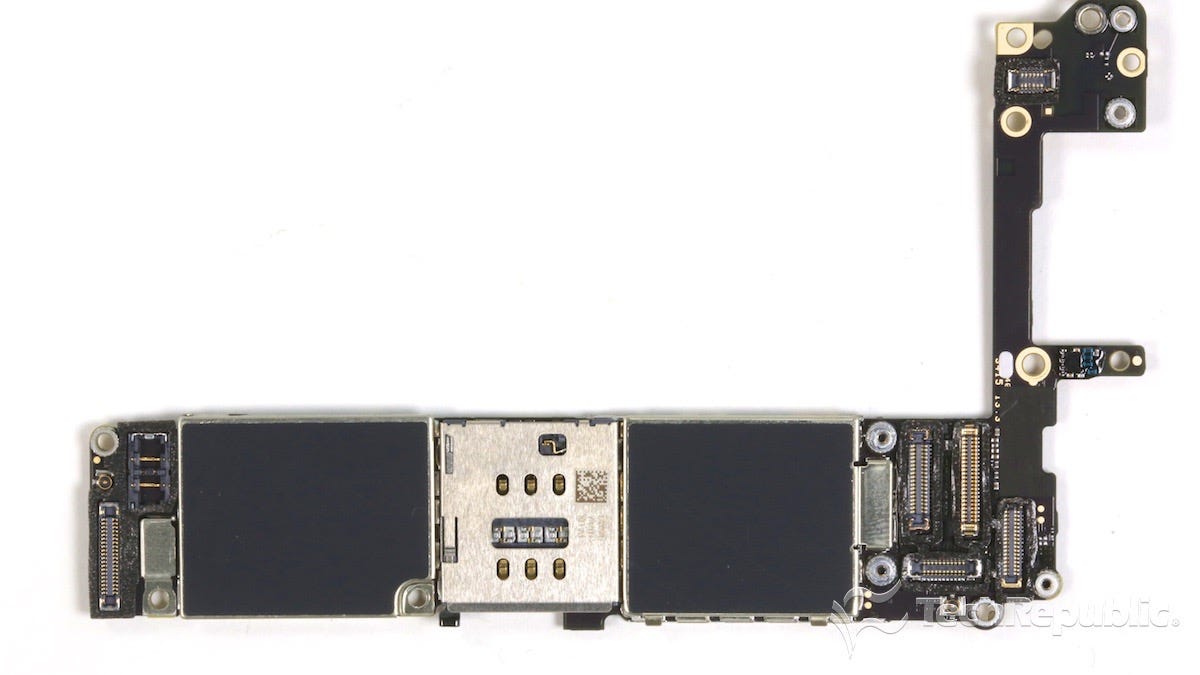The iPhone 6S may look identical to last year’s iPhone 6, but it’s not the same phone. As with previous S models, Apple put most of the changes on the inside.
Like the previous model, the 6S measures 5.44 inches tall and 2.64 inches wide. It’s 0.2 millimeter thicker and about a half an ounce heavier, but I doubt most people will notice these differences.
The iPhone 6 and 6S both have a 4.7-inch Retina HD display, but the newer phone features Apple’s 3D Touch technology, which can detect how much pressure you apply to the screen. Perhaps, this is why Apple covered the 6S’ display with a new kind of chemically strengthened glass.


Now playing:
Watch this:
What’s inside the Apple iPhone 6S?
5:14
In addition to using stronger glass, Apple also used a different type of aluminum on the 6S. Instead of using a series 6000 alloy as they did on the iPhone 6, Apple built the 6S’ body out of a more rigid, series 7000 aluminum alloy. Hopefully, we won’t see any “bendgate” stories about the 6S.
Now that we’ve looked at the phone’s outside, it’s time to break out our tools and take a look at the inside.
For a complete list of specs, pricing and real world performance tests, check out the CNET’s full iPhone 6S review.
Disassembling the iPhone 6S
To crack open the iPhone 6S, I removed the two Pentalobe screws located along the bottom edge and then used our handy, suction-cup opening tool to pop loose the display. Separating the front panel from the aluminum body was more difficult on the iPhone 6S than it was on last year’s iPhone 6. Apple appears to have used stronger adhesive between the panel and the body.

Bill Detwiler/TechRepublic
With the front panel open, I removed several metal plates that cover connectors for the battery, front panel and other components. I then disconnected the battery and completely removed the front panel.
I left the battery attached to the phone to avoid having to glue it back to the body after the teardown. For several years, Apple has attached the iPhone’s battery with adhesive strips, which work like those single-use strips people hang stuff on their walls with. The strips make removing the battery easy, but they’re really only designed to be used once.


Bill Detwiler/TechRepublic
The first internal component to be removed was the new iSight camera, which Apple upgraded to a 12-megapixel unit that can shoot 4K video at 30 frames per second. A small antenna, located in the upper-left corner of the body above the battery, came out next.
After removing a few screws, dealing with a new hex-head standoff, and detaching the remaining connectors, I lifted out the motherboard.
The last pieces to come out were the speaker assembly and Apple’s new Taptic Engine, which sits below the battery and replaces the vibration mechanism found in the iPhone 6 and 6 Plus.
As with the battery, I chose not remove the headphone and Lightning connector assembly, volume buttons, ringer switch, power button and a slew of connector wires.
Most of these components are held to the case with both screws and adhesive. If any of these components were damaged, removing and replacing them wouldn’t be difficult. But I didn’t want to risk damaging them during removal.


Bill Detwiler/TechRepublic
What the teardown tells us
No big internal design changes: The overall hardware layout is the same as on the iPhone 6. The speaker and Lightning connector assembly is located along the bottom of the body, the battery is attached to the left side, the motherboard is on the right, and the camera assembly sits in the upper-right corner.
Reworked speaker assembly: The iPhone 6S’ Taptic Engine is slightly larger than the old, linear oscillating vibration mechanism found on the iPhone 6. Apple reshaped the speaker assembly to accommodate this change.
Lower capacity battery: The iPhone 6S’s battery is rated at 1,715mAh compared to the 6’s 1,810mAh battery. Despite this reduction, Apple claims battery life on the 6S will be the same as it was on the older phone.
New front panel: Apple made several changes to the iPhone’s front panel with the 6S. They upgraded the FaceTime camera from 1.2 megapixels to 5 megapixels, they added an improved Home button (which reads fingerprints much more quickly than the old one), and they added 3D Touch functionality. They also reduced the number of connectors from four to three. Unfortunately, they didn’t also reduce the panel’s weight. The new panel is actually heavier than the old one.


Bill Detwiler/TechRepublic
Shields soldered to the system board: Unfortunately, the shields that cover the iPhone 6’s motherboard are soldered in place — obscuring our view of the new A9 processor (with integrated M9 motion coprocessor) and most of the other chips. As I wanted to (and did) put this phone back together in working order, I left the shields in place.
Solid S model update
Hold an iPhone 6 next to a iPhone 6S, and you’d be hard-pressed to tell the two apart. Except for a small S label on the back of the iPhone 6S and a newly available rose gold finish, the phone looks identical to last year’s 6. Looks however, can be deceiving. Apple packed lots of new tech into the iPhone 6S, and if you’re still using a 5 or 5S (and maybe even a 6), I would definitely think about upgrading.
Update 10/2/2015 8:43 EDT: Updated the iPhone 6S’ thickness to correctly read 0.2 millimeter.



